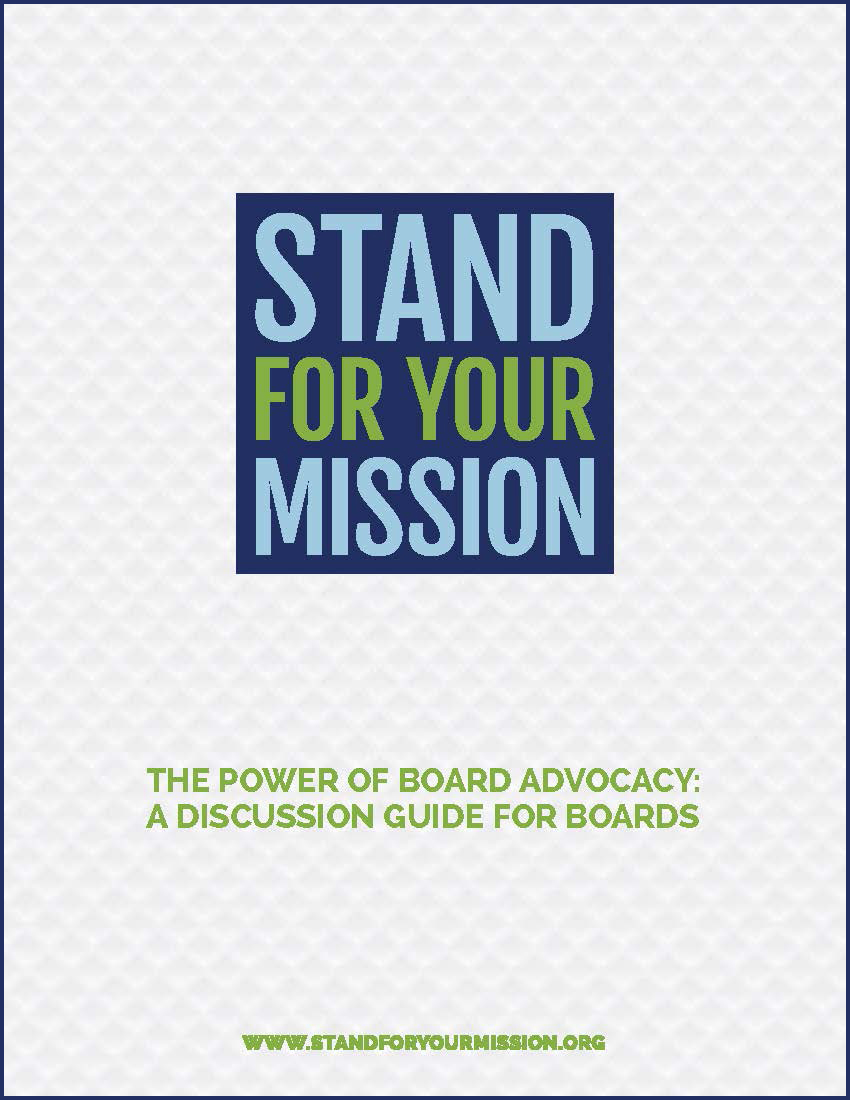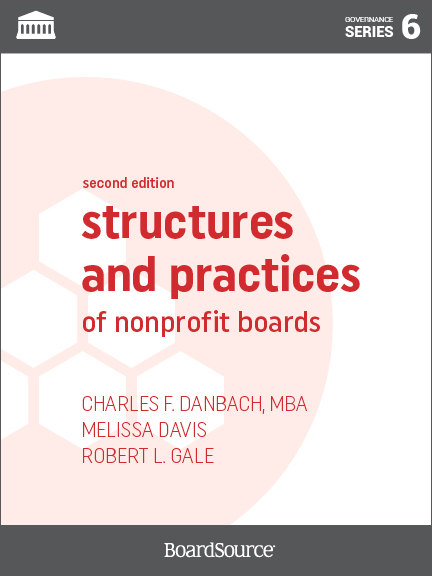Nonprofit Advocacy and Ambassadorship
BoardSource strongly encourages boards and board members to lead their organizations toward greater engagement in advocacy and to play a personal role in advancing their missions through ambassadorship.
What is Advocacy and Ambassadorship?
While similar, advocacy and ambassadorship have small points of differentiation. Ambassadorship typically involves sharing your organization’s mission using your platforms, whether that’s in person or online, as a representative for that nonprofit. Advocacy, likewise, involves using one’s voice to support an organization, but centers around specific causes or policies that you want to create or change to further your nonprofit’s mission.
Being an advocate or an ambassador is directly connected to each board member’s fundamental responsibility to champion the organization’s work, and these can be accomplished in a variety of ways:
- Use your sphere of influence to promote your nonprofit’s mission
- Request and rally changes needed to further your organization’s cause
- Support and defend your nonprofit’s message publically
- Participate in legal lobbying and political activity to gather necessary resources or support for your organization’s purpose
There are many ways to carry the responsibility to be an advocate and ambassador, and every small act can make a lasting impact.
The Importance of Advocacy and Ambassadorship
Being an advocate or an ambassador is directly connected to each board member’s fundamental responsibility to champion the organization’s work, and these can be accomplished in a variety of ways:
- Use your sphere of influence to promote your nonprofit’s mission
- Request and rally public policy changes to further your organization’s cause
- Support and defend your nonprofit’s message publicly
- Participate in lobbying and political activity, as allowed by law, to gather necessary resources or support for your organization’s purpose
Advocacy and ambassadorship help ensure that your organization isn’t missing opportunities to advance its mission. In fact, Forces for Good: The Six Practices of High-Impact Nonprofits revealed that the most effective organizations are actively engaging in advocacy as a fundamental strategy for greater impact.
Board members are uniquely positioned to be successful advocates and ambassadors for their missions. As business leaders, community volunteers, philanthropists, and thought leaders, they have the connections, confidence, and respect needed to speak up when policy decisions are being made that could impact their organization’s ability to achieve its mission.
Nonprofit Advocacy Matters
Board members are essential to successful community outreach and advocacy. Despite these understandings about the impact of this work — according to BoardSource’s Leading with Intent: National Index of Nonprofit Board Practices — only 52 percent of organizations report that their board members are actively involved in advocating for their missions, and many organizations aren’t advocating at all, leaving a gap between their current impact and what is possible. According to the 2017 Leading with Intent report, 43 percent of chief executives and 42 percent of board chairs include outreach efforts and acting as ambassadors for the organization as one of the three areas most in need of board improvement.
Strong board leadership is not just about checks and balances; it is about creating the circumstances that will allow nonprofits’ missions to be achieved. Board members need to be educated about the board’s role in advocacy and given appropriate support and resources to become ambassadors for their organizations.
Engaging board leaders more directly in advocacy work is an opportunity to enhance your organization’s impact.
Download the Nonprofit Discussion Guide
Download the Foundation Discussion Guide
Bridging the Gap
The most effective nonprofits recognize that successful advocacy and ambassadorship simply means using our voices as committed and informed champions for our missions. To show how strongly we believe in the power of these key roles, BoardSource added a new expectation in the most recent edition of Ten Basic Responsibilities of Nonprofit Boards and co-launched the Stand for Your Mission campaign in 2014, which provides guides to both foundational and nonprofit advocacy discussions.
All board leaders should be inspired to “stand for their missions” through active engagement as advocates and ambassadors. Organizations should fully leverage the potential for impact through advocacy. Use the resources below to ensure that you understand the laws surrounding nonprofit advocacy, lobbying, and political activity so you can support your organization’s mission passionately and ethically.








